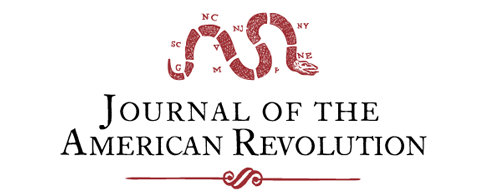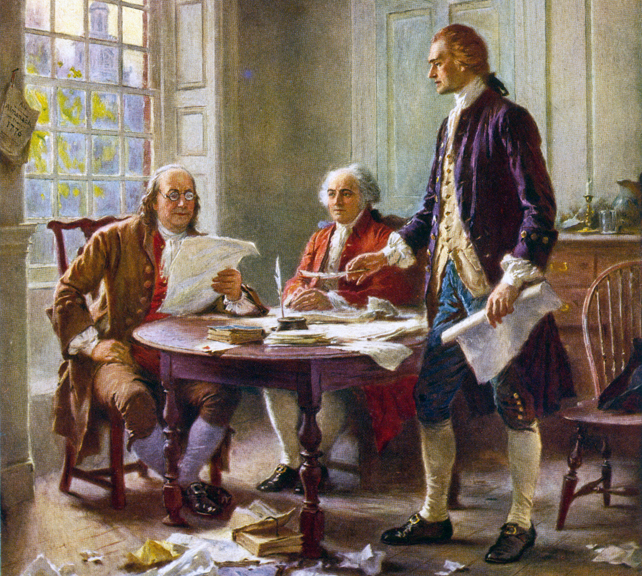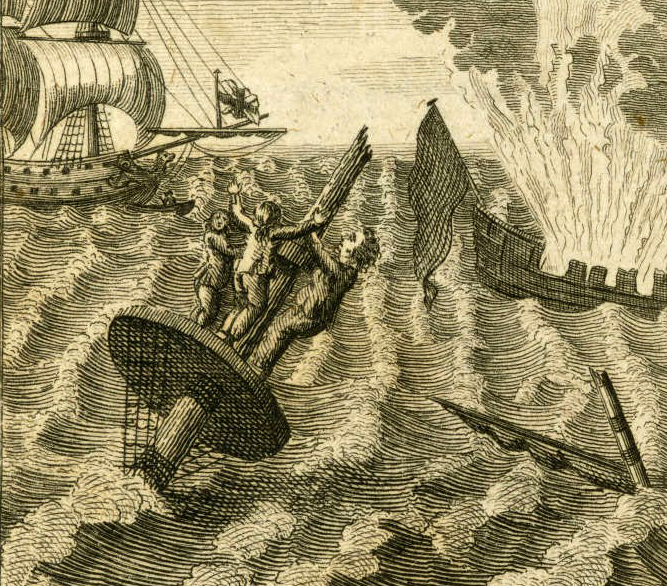Historian Richard Kohn argued in 1981 that to make progress in military history, the first thing historians would need to do would be to seek the “true identity of soldiers” grounded in the community and time from which they came. Among those soldiers was John Shee, an Irish gentleman from Ballyreddin, County Kilkenny born to Marcus Shee, a physician, and his wife Anna Mutlow about 1741. Shee’s great grandfather, Marcus Shee of Wassehays, had been outlawed as a Jacobite in April 1691 causing the family to move from Scotland to Ireland. As a younger son without prospects of inheriting his father’s lands, Shee joined the army as an ensign via purchase in the 18th (Royal Irish) Regiment of Foot on December 31, 1759, as the army was expanding during the Seven Years War. The 18th Foot remained in Ireland throughout that war, and Shee was promoted to lieutenant on February 13, 1762. He purchased his captaincy on January 1, 1766, upon the promotion of a brother officer to major. A year later Shee married Elizabeth Walsh, possibly in response to the news that the 18th Foot was to be posted to North America in the spring of 1767. This posting was part of a rotation of troops to bring regiments back from North America who had fought in the French and Indian War and Pontiac’s Rebellion and replace them with fresh troops.[1]
As part of the 18th Foot’s preparation for rotation to North America, the regiment was inspected at Dublin on April 11 by Lt. Gen. Michael O’Brian Dilkes, commander-in-chief of the forces in Ireland. Shee was present as the captain of a battalion company. The company was complete with a lieutenant, an ensign, two sergeants, a drummer, and twenty-eight privates and corporals present and fit for duty. One man was sick. Eight of the men were new recruits from within the past year. Fifty-three percent of the men were English, thirty-seven percent were Irish, three percent were Scots and one man was listed as a foreigner. Fifteen had served for ten or more years in the Army, another ten had served four or five years. Most of the Irish were probably new recruits.[2] This company was altered before embarking at Cork for America by adding an additional eighteen men. Some might have been new recruits, but most were likely drafts from the 50th Foot and other regiments in Ireland. Unfortunately, no records are known to survive of the nativity of the new men and their lengths of service.[3]
Shee and the rest of the 18th Foot arrived at Philadelphia in July 1767, where they remained for the rest of the year. In October, the regiment was reviewed by Gen. Thomas Gage and “represented a Bush fight which gave great satisfaction to some Thousands of Spectators.”[4] The new Mrs. Shee accompanied her husband to America, and George Buttricke, the regiment’s quartermaster, wrote that the officers spent their evenings in Philadelphia surrounded by Maderia and women.[5] This pleasant assignment soon changed when the regiment was ordered west in May 1768 to garrison Fort Pitt, at the confluence of the Allegheny and Monongahela Rivers which form the Ohio River, and Fort Chartres on the Mississippi River some 900 miles to the west of Philadelphia. Shee’s ensign, William Raymond, resigned from the Army at the end of May, possibly to avoid having to serve in these frontier garrisons.
The trip west to Fort Pitt was difficult due to a shortage of wagons for baggage and supplies. When the 18th arrived at the fort in July, Shee served on a general court martial board that tried five deserters from the 34th Foot and one from the 18th. Shee and his brother officers found all six soldiers guilty of desertion and sentenced two to death.[6] Shee would routinely serve on such boards for the rest of his career.

Two companies of the 18th Foot remained at Fort Pitt while Shee’s company along with four others took boats down the Ohio River in August, arriving at Fort Chartres on September 5, 1768. At Fort Chartres, a former French fortification, sickness enveloped the regiment within two weeks of arrival. According to Buttricke, in early October the five companies in Illinois could barely mount a corporal and six sentries to guard the fort. Lt. Marcus Paterson, Shee’s lieutenant, died on October 3, 1768, and Shee’s company lost at least the company drummer and nine privates to the initial fevers that impacted the 18th in Illinois. In the regiment, four to five men died each day, as did many soldiers’ wives. By February 1769, Buttricke wrote to a friend that the 18th had buried three officers, forty men, nearly all the women including Mrs. Shee, and thirty-seven children since their arrival in Illinois; Shee lost his wife and both of his subalterns within fifteen months of arriving in America. Buttricke was still writing of the disagreeable circumstances of the regiment in Illinois in May 1770.[7] Replacing those officers and men would not be timely in their remote location.[8]
Shee took command of the grenadier company on October 25, 1768. The grenadiers had lost two of their three officers when Lt.. Samuel Turner and Capt. John Stewart died on September 29 and 30, 1768 respectively. Approximately a dozen grenadiers would succumb to disease by Spring 1769. Shee was the third captain to command the grenadiers since the 18th Regiment’s arrival in America; he would remain in command of the grenadiers for the next seven years, providing a level of stability in the regiment’s premier company.[9]
When Pontiac, leader of the eponymous Indian rebellion of 1763, was killed near the village of Cahokia by a Peoria Indian in 1769, tensions rose between the Indians and the British. Some rumors claimed the killer had been a paid assassin of the British. Shee and his grenadier company were dispatched to Cahokia after Indians killed three British traders in the area in 1770. Shee turned Cahokia’s Holy Family Catholic Church into their barracks as church had been without a priest for some time. The men of the company were subject to frequent alarms due to the Indians. The concerns were not imaginary: grenadier John Mitchell was killed and scalped on March 19, 1771, and grenadier John Knight was killed while farming on Shee’s personal farm on March 25, 1772 near Cahokia. If these Indian attacks are considered as combat deaths, they were the first such deaths that the regiment had suffered in at least twenty-five years and possibly as long as forty-four years.[10]
Shee appears to have had at least some contact with the Spanish governor across the river as St. Louis and dealt effectively with civil problems among the mostly-French citizens and the few British settlers of Cahokia. The grenadier company returned to Fort Chartres in May 1772 as eight companies of the regiment prepared to return to the east coast, leaving two companies at frontier posts.[11] Shee served as the regiment’s second in command under Maj. Isaac Hamilton during the trip back to Philadelphia.[12]
When the grenadier company returned to the North Liberty Barracks in Philadelphia, Shee’s position of seniority in the Royal Irish had significantly improved because officers had died or resigned during the regiment’s first years in America. In late 1772, Shee was the second most senior captain and often commanded the regimental parade through 1773 and 1774 as the lieutenant colonel had returned to England and the major and the senior captain were both often sick. This quick rise in Shee’s seniority may have attributed to Lt. Alexander Fowler’s conception that Shee actively conspired to get Lt. Col. John Wilkins to retire so he could ultimately obtain the regiment’s majority. Both Fowler and Chaplain Robert Newburgh wrote to warn Wilkins that Shee, along with the Royal Irish’s Capt. Benjamin Chapman, were his true enemies.[13]
In November 1773, the 18th and a company of Royal Artillery were inspected by Col. James Robertson of the 16th Foot on Philadelphia’s commons.[14] Shee appears to have regularly reviewed his company’s duty rosters. He noticed in March 1774 that Nicholas Gaffney, a grenadier, had not been taking his turn on guard duty. Gaffney had been telling the orderly corporals that Captain Shee had exempted him from guard duty, but that was not accurate. When ordered to make up the missed guard shifts, Gaffney marched instead to Major Hamilton’s quarters and filed charges against Captain Shee. Gaffney, who had been promoted to and reduced from corporal under Shee, accused Shee of selling poor quality goods to his own soldiers at a profit while at Cahokia. After Gaffney was reduced, he appears to have harbored a grudge against his captain. This was a grudge that Chaplain Newburgh seems to have encouraged as a way to get back at the officers for his own problems within the officers’ mess.[15] Shee was additionally charged with issuing provisions to the men of his company against their will, notably “stinking Venison and Bears meat.” Gaffney accused Shee of misconduct that allowed John Knight to be killed by Indians at Cahokia. Shee was found not guilty of Gaffney’s charges; Gaffney was court martialed for filing false charges and found guilty.[16]
Shee’s grenadiers were ordered from Philadelphia to New Jersey with the rest of the 18th Foot on September 1, 1774, as part of a reorganization of forces due to the growing agitation in Boston.[17] When the regiment left Philadelphia, the Pennsylvania Gazette praised the regiment for its excellent deportment while garrisoned in Philadelphia.[18] Three companies were then to be filled to capacity and sent to Boston under Captain Shee including the grenadiers. The other five understrength companies were sent to New York City under Major Hamilton
While in Boston, Shee’s dog was lost in February 1775. He ran the following advertisement in the Boston Gazette:
Lost, a blue speckled Bitch, of the Pointer kind, not above six Months old, had on when lost, a brass Collar with Captain Shea’s Name, of the Royal Irish. She has long brown Ears and a large round brown Spott on the middle of her back, the rest of her marked as above. Whoever will bring her to the Serjeant Major of the royal Irish, at their Barracks, shall receive Five Shillings Sterling Reward, and no Questions ask’d.
N.B. As she has been accustomed entirely to Soldiers, it is hoped she has followed some who will secure her and bring her as directed. Boston, Feb. 10th, 1775.[19]
Shee’s grenadier company fought at Lexington and Concord on April 19, 1775, taking the regiment’s first combat losses excluding those on the frontier. Shee was present with his company on the march that day. Lt. George Bruere’s reported that he took command after Shee was wounded, possibly on the return trip near Lexington, but Shee was not listed as a casualty in any official returns, suggesting that it was only a slight wound.[20]

At Bunker Hill, the Royal Irish grenadier company had one quarter of their number killed or wounded. Shee appears to have come through the battle unscathed, but one of his lieutenants, William Richardson, was badly wounded. The other lieutenant, George Bruere, may have been slightly wounded.[21] As Bunker Hill showed the colonists were capable of putting up a firm resistance, General Gage worked to shore up his officer corps. Gage allowed Major Hamilton to sell his commission to Shee. Officially, Shee purchased his majority on July 26, 1775, upon Hamilton’s retirement. The process had to be confirmed in England and Shee was still listed in contemporary documents as Captain Shee in Boston as late as November 1775. It is questionable as to exactly when his majority was announced. The October 1775 muster rolls of the Royal Irish indicate that he was in actual command of the regiment in Boston at that time, as Major Hamilton and Capt. Charles Edmonstone had retired. Shee served on two more court martial boards while in Boston.[22]
Shee returned to England with the cadre of the Royal Irish in early 1776. Only thirteen men who had served in America with the regiment remained in the grenadier company when it was mustered in August 1776. One of them, Robert Sparrow, had served the entire time with the grenadier company as was discharged and recommended for a pension. The other man who had served with the grenadiers during the entire time the regiment was in America was Sgt. Martin Bell, who became an officer in another regiment in 1781.[23]
Shee was ordered to preside over a general court martial for two deserters from the Royal Irish, William Green and Henry Knight, in late 1777 at Dover. He wrote to the judge advocate asking for another officer to be appointed president, as he personally planned to prosecute one of the cases. Both were found guilty, and Green was executed. It appears that Shee was eager to instill a strong respect for the Articles of War into the new recruits of the regiment now that he was the regiment’s major. Green was clearly executed as an example to the regiment. Shee appears to have been zealous in prosecuting the case against Green. In fact, the judge advocate general’s office later questioned the 18th’s adjutant, John Mawby, to be sure some of the evidence presented by Shee, which was hearsay (though certainly true) according to the army’s lawyers, wasn’t considered by the court martial board.[24]
Shee was in command of the 18th Foot at Coxheath Camp in 1778 and was the field officer of the day on July 6 and August 4, 1778 for the left wing of the army camped there. It was at that time that the Royal Irish was one of the regiments taught the new 1778 Manual Exercise. Shee sat on a court martial board at Coxheath Camp on August 31 to try Bryan Sheridan of the Royal Irish for desertion. He was found guilty and was sentenced to be shot to death.[25]
Shee commanded the 18th at Warley Camp in the summer of 1779. He remained with the Royal Irish until October 14 of that year, when he was promoted to lieutenant colonel in the 75th (Prince of Wales’s) Regiment of Foot that had been raised the previous year. The major of the 75th was Hugh Lord, who had served briefly with Shee in Illinois.[26] Shee exerted himself significantly enough in training his new regiment that Lt. Gen. William Haviland made the following observation in the 75th’s inspection return in 1781:
The general good appearance of this Corps, the neatness of their dress, the excellent of their Appointments, their steadiness & attention in the Field, are all testimonies of the uncommon care of their Commanding Officer, Lieut. Colonel Shee, who has greatly improved the Regiment since last Review, when I have much satisfaction in doing justice to their merit, by marking a very favorable Report of them.[27]
It is a rare example of an individual officer being cited in a regiment’s inspection return.
With the end of the war in America, the army was reduced in size, including the disbandment of most of the new-raised regiments. Shee transferred to the more senior 50th Foot and then to the 35th Foot on June 13, 1783, when Lt. Col. James Cockburne of the 35th was court martialed and cashiered. Shee remained with the 35th until his retirement. The 35th was stationed in the West Indies until 1786; it is not clear if Shee was present with the regiment there. Lord John Strathhaven replaced Shee as the 35th Foot’s lieutenant colonel when Shee retired on April 4, 1789 while regiment was at Edinburgh Castle.[28]
In his retirement, Shee was instrumental in constructing the Bennetsbridge Protestant Church in 1795. He remarried on November 26, 1797 at St. Mary’s Church in Dublin to Honoria O’Conor, the daughter of the chief of the O’Conor clan. The couple appears to have had two daughters, Anne Elizabeth and Honoria Mary. Shee’s two sons, Marcus and Richard, may have been from this or Shee’s first marriage. The elder son, John, entered the army as an ensign in the 35th Foot and later helped build a Catholic Church in the area. Shee may have had a house at Highgate, London, in the early 1800s. His ancestral home, Sheestown House, was razed in 1833. He probably died around November 2, 1812.[29] A grave marker Bennetsbridge Chapel in County Kilkenny was still extant in 2006. A second gravestone inside the ruins of the church marked the graves of his father and an older brother, James.[30]
Shee was approximately thirty-five years old with sixteen years of military service when he fought against the colonists at Lexington, Concord, and Bunker Hill. Though far from providing a three-dimensional portrait of Shee, the historical record shows him as a successful officer. He obtained his captaincy more quickly than about three quarters of his brother officers and ended up retiring as a lieutenant colonel; less than 20 percent of officers reached that rank during their careers.[31] Shee seems to have had enough ready funds to be able to purchase a promotion when one opened and he had lodged the necessary funds for his majority prior to the retirement of Major Hamilton.[32] He appears to have been an excellent training officer and a strict disciplinarian, as evidenced by his role in courts martial and his support of capital punishment. Lt. William Blackwood, who served under Shee at Cahokia, stated that he “always felt Shee was particularly attentive to the safety of the Garrison.”[33] Shee seems to have been relatively generous. He loaned funds to brother officers at times and rewarded some of his soldiers in consideration of their long and faithful service.[34] Though he came from a modest background as the son of a physician and was Irish, he appears to have made a positive impression on his superiors and completed a successful military career of forty years. He then retired, reared a family, and contributed to his community.
[1]Five regiments were ordered to North American on January 1, 1767, the 10th, 14th, 16th, 18th, and 26th Foot. All would see action early in the American Revolution. They replaced the 17th, 27th, 28th, 42nd (Royal Highland) and 46th Regiments of Foot which were to be rotated back to Great Britain. Steven Baule, Protecting the Empire’s Frontier (Ohio University Press, 2014), 10.
[2] The UK National Archives (TNA) WO 21/11, Return of the 18th (Royal Irish) Regiment of Foot, April 11, 1767.
[3] Ibid.; TNA: WO 12/3501, Return of Captain Shee’s Company, 18th (Royal Irish) Regiment, October 24, 1767.
[4] Pennsylvania Gazette, October 2, 1767.
[5] George Buttricke, Affairs at Fort Chartres, 1768-1781 (J. Munsell, 1864), 4.
[6] TNA, WO 71/77, 73-88, Returns of General Courts Martial.
[7] Buttricke, Affairs at Fort Chartres, , 7, 11-12.
[8] TNA, WO 12/3501, Return of Captain Shee’s Company, 18th (Royal Irish) Regiment, October 24, 1768.
[9] TNA, WO 12/3501, Returns of Grenadier Company, 18th (Royal Irish) Regiment.
[10] Richard Cannon, Historical Record of the 18th (Royal Irish) Regiment of Foot (London, 1844), 44-47; George L.M. Gretton, The Campaigns and History of the Royal Irish Regiment (William Blackwood & Sons, 1911), vol. 1, 70, 77; WO 12/3051, Returns of Grenadier Company, 18th (Royal Irish) Regiment, TNA.
[11] Clements Library, University of Michigan, Gage Manuscripts (Gage MSS), Volume 25, English Series: Extracts of letters from John Shee to John Wilkins, Illinois Country, from originals 1770-1772, enclosed in William Barrington to Thomas Gage, July 30, 1774. Two companies of the 18th Foot were left at Kaskaskia, Illinois. They remained there until May 1776.
[12] Baule, Protecting the Empire’s Frontier, 19-21.
[13] Gage MSS, Alexander Fowler to John Wilkins, October 24, 1774 and Robert Newburgh to Wilkins, December 17, 1774.
[14] Pennsylvania Chronicle, November 22, 1773.
[15] For more on Chaplain Newburgh, see John Gilbert McCurdy, Vicious and Immoral Homosexuality, the American Revolution, and the Trials of Robert Newburgh (Johns Hopkins University Press, 2024).
[16] TNA, WO 71/79, court martial of Nicholas Gaffney, 258-270.
[17] Gage MSS, Gage to Frederick Haldimand, September 1, 1774.
[18] Pennsylvania Gazette, September 14, 1774.
[19] Boston Gazette, February 13, 1775.
[20] Gage MSS, Petition of George Bruere to King George III [n.d.].
[21] Baule, Protecting the Empire’s Frontier, 147-148.
[22] TNA, WO 71/80, 375-380, court martial of William Beck, 43rd Foot; WO 71/82, 90-102, court martial of William Shields, 10th Foot for having quitted his post and stealing; 102-115 and court martial of Lt. Edward McGouran, Royal Fencible American Regiment, for going ashore without leave and marauding, disobedience of orders and being drunk on duty and behaving unlike a gentleman.
[23] Shee rewarded Bell with a commission as the 75th Regiment’s quartermaster in 1781; TNA, WO 27/47, Inspection Return of the 75th Foot, August 18, 1781.
[24] TNA, WO 72/8, Shee to the judge advocate general, October 22, 1777; judge advocate general to John Mawby, November 16, 1777.
[25] Orders at Coxheath Camp; Society of the Cincinnati Library, Washington, DC; TNA, WO 71/54, court martial of Bryan Sheridan, 18th Foot, August 31, 1778.
[26] Randolph County Records: 4-2 Court of Judicatory, 1768-1770.; TNA, WO 12/3501, Muster rolls of the 18th (Royal Irish) Regiment of Foot; WO 27/11 Irish Establishment Returns for 1767; WO 27/36 British Establishment Returns for 1777; WO 65, Army Lists; WO 71/79.
[27] TNA, WO 27/47, Inspection Return of the 75th Foot, August 18, 1781.
[28]Richard Trimen, Historical Memoir of the 35th Royal Sussex Regiment of Foot (Southampton Times, 1873), 64.
[29] Clare Journal (Ireland), November 2, 1812, notes the death of John Shee, former lieutenant colonel of the 35th, of Kilkenny at Waterford.
[30] The stone now in the ruins of the church, reads, “Near this place lie interred the remains of Col. Shee who died Novr. 1822 [sic], aged 19 [sic] years. And underneath this stone are interred the remains of John Shee Esq. his eldest son who died in September 1839 aged x years. And of Richard Shee his third son who died 29th Dec. 1845 aged x years. Most likely the 1822 date is an error in either transcription or engraving. The gravestone of his father Marcus Shee, reads Underneath this stone lies interred the body of Marcus Shee Esq. Doctor of Physick who departed this life the 23rd of December 1762 at the age of 55. On the right of this stone lies also interred the body of James Shee Esq., son of the above Marcus who died on the 3rd of August 1783 aged 37 years”; Mary Breen, “The Civil Parish of Treddingstown,” In the Shadow of the Steeple No. 1 (2009), homepage.eircom.net/~duchas/steeples/SteepleVol1/treadingstown.htm.
[31] Mark F. Odnitz, “The British Officer Corps, 1754-1783,” Ph.D. diss., University of Michigan, 1988, 340.
[32] Gage MMS, Isaac Hamilton to Gage, July 20, 1775. It is possible that Gage’s direction at Boston that all promotions would be handled through regimental seniority, including those of field officers, was intended to facilitate Shee’s majority. This was a change from previous practice and at least a few officers complained of the change. Odnitz, “The British Officer Corps, 1754-1783,” 322-323.
[33] TNA, WO 71/79, court martial of Nicholas Gaffney, 313.
[34] TNA, WO 12/3051, Returns of Grenadier Company, 18th (Royal Irish) Regiment; WO 12/3501, WO 27/47, Inspection Return of the 75th Foot, August 18, 1781.








2 Comments
Thank you for sharing! Excellent article. Fact meets fiction when Captain Shee had a line of dialogue in the novel “Sowing Dragon Teeth: A Novel of the Battle of Lexington and Concord.”
Really loved this piece. Thanks for the profile of a veteran officer.